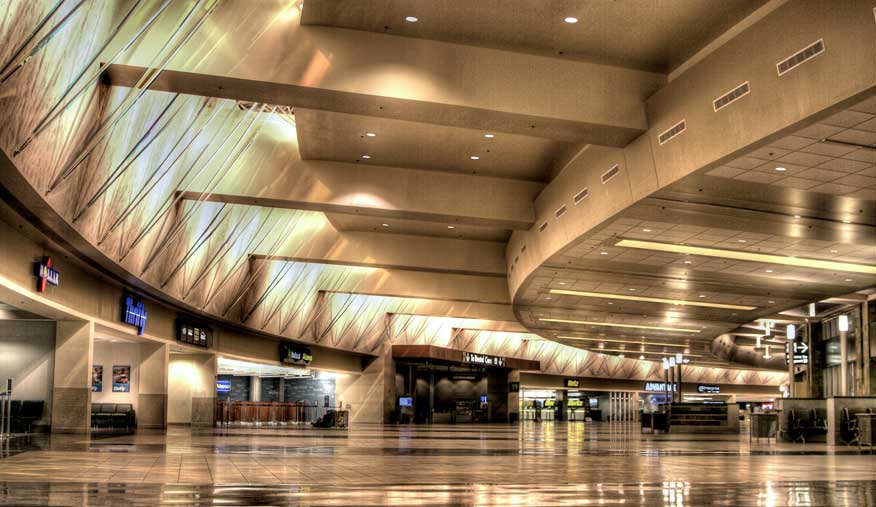The Federal Aviation Administration forecasts that air travel in the U.S. will increase by about 50% in the next 20 years. Are airports ready for that surge? More important, can airports provide the kind of frictionless experience that passengers will expect and demand?
To explore these questions, last February engineering giant Arup conducted a “salon” in San Francisco on the future of aviation. Invitees were a diverse mix of 22 experts representing airport operators, planners, developers, engineers, and manufacturers, including some—like representatives from Autodesk, Intel, and Visa—who offered a broader context.
Arup let BD+C take a peek at a draft of its report on the salon’s key points. The report identifies core themes for three primary stakeholders—the airlines, passengers, and airports—that revolve around “choreographed seamlessness,” “connected and predictable” service, and productive systems. Design can drive airport efficiency, but only when there’s positive cooperation among stakeholders.
Passenger satisfaction often begins with “technological convergence” that facilitates easier mobility and processing. “Touchless screening, automated check-in, tailored retail services, and real-time operational information could stimulate the seamless experience,” the draft stated.
However, technology is developing faster than the aviation industry can devise purposes for it. On the other hand, “no tech trumps high tech,” meaning that passengers still prefer a humanistic, natural environment. “The future of technology will always be about the people who use it.”
Other lessons learned:
• Technology shrinks future airport concrete. Huge spaces once allocated for check-in and security should be reconsidered as passengers adapt to self-service options.
• Collaboration frees technology. Barriers between airlines, airports, regulators, and technology providers will only thwart process enhancements.
• Your bag will have its own identity. Renovation and new construction of airport terminals often focuses on streamlining baggage-handling systems. While paper bag tags aren’t going away, it’s only a matter of time before luggage that’s traceable via bar codes or RFID chips becomes available for purchase in stores.
• The future of retail is at the airport. Retail, food, and beverage are big revenue streams for airports. That might explain why some large hubs have turned their terminals into shopping malls.
• Your journey will be branded. Airlines currently control the traveler’s experience, but the salon’s participants see opportunities for other entities—including airports themselves—“to occupy the passenger’s cognitive space.”
Another theme from the salon: the need for “intelligent” ground transportation that “allows riders comfort in knowing their entire journey is accounted for before boarding.” Technology could help passengers pre-plan and customize their trip along all journey touch points, like scheduling and predicting arrival times for door-to-hotel transport, or tracking luggage in real time.
Many of the salon’s attendees highlighted the need to ensure that regulatory actions—especially those relating to security, customs, and immigration—are enforced in ways that minimize passenger delays.
Related Stories
| Aug 11, 2010
Jacobs, HDR top BD+C's ranking of the nation's 100 largest institutional building design firms
A ranking of the Top 100 Institutional Design Firms based on Building Design+Construction's 2009 Giants 300 survey. For more Giants 300 rankings, visit http://www.BDCnetwork.com/Giants
| Aug 11, 2010
Earthquake engineering keeps airport grounded
Istanbul, Turkey's new 2.15 million-sf Sabiha Gökçen International Airport opened on October 31, 2009, becoming the world's largest seismically isolated building. Arup's global airport planning and engineering team, in collaboration with architects Dogan Tekeli Sami Sisa Mimarlik Ofisi and contractor LIMAK-GMR JV, working within an 18-month timeline, designed and built the facility wi...







